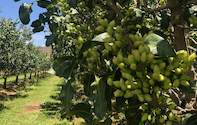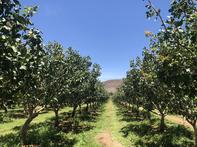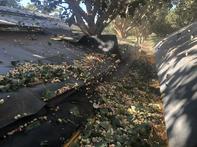Pistachios are in the cashew family. Like cashews, they are not a true nut but seeds of red or yellow plum-like fruit that are removed during processing.

They are native to the Middle East from where they spread to the Mediterranean and the rest of the world. There are numerous legends about pistachios, such as that the Queen of Sheba declared it a royal food, which commoners were forbidden to grow or eat.
They are mentioned along with almonds in the Bible in Genesis 43 verse 11, which has left people thinking that they had arrived on earth along with Adam.
Global Production
The USA and Iran are the top pistachio producers in the world, accounting for 47% and 38% respectively of the total production. Production is growing steadily in Turkey, which together with the USA and Iran accounts for more than 90% of global production.Local Production

Pistachio production was non-existent in South Africa until the 1990s, when the Industrial Development Corporation (IDC) imported and evaluated plant material on various plots across the country.
The IDC identified Prieska in the Northern Cape as one of the “best-suited areas in the world” for pistachio production due to to the region’s hot dry summers, plentiful water from the Orange River, cold winters and good soils. The organisation, for this reason, established a large-scale project, with orchards and processing facility, near Prieska to illustrate the commercial potential of pistachio production.
By 2011, however, the IDC closed shop, leaving a handful of farmers who planted trees to supply them without a market. By 2019 only two of these farms were still producing pistachios, namely Uitdraai belonging to David Muller and Wercon, which belongs to Connie Coetzee.
These two farmers launched the Pistachio Growers Association of South Africa in 2019 to guide and assist the establishment and expansion of the industry.
Varieties
Aryeh, Shufrah and Sirora used on a Clone 2 rootstock, have so far faired the best under South Africa’s production conditions. The Clone 2 rootstock is a variation of Pistacia integerrima and produces a good combination of vigour, cold and disease resistance. Areyh produces large tasty pistachios that are able to compete with the best the world has to offer.Harvesting

Sales
South Africa annually consumes 150 to 200 tons of pistachios per year of which only ten percent is produced locally. The rest is imported, primarily from Iran and the United States.
Pistachios present a great earning potential for South African farmers, due to the growing demand for healthy food as well as South Africa’s ability to produce pistachios at a lower cost than the United States.
Besides this, the country is able to supply the market at a time when it is relatively empty, since we are in the Southern Hemisphere and the main suppliers are in the Northern Hemisphere.
Uses
Pistachios are of the most expensive nuts around, with a steady international consumption that is growing due to these nuts high nutritional value. The majority of pistachios are consumed as snacks, but many are also used in baking, to make ice creams, in nougat or Turkish delights.By Glenneis KrielFor bulk or Pistachios export enquiries please use the enquiry link below.